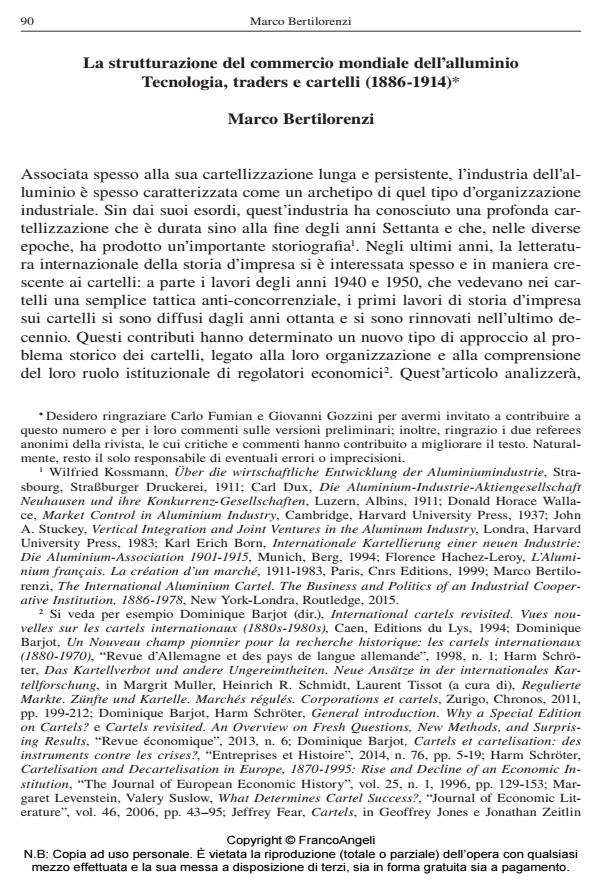Crafting the Global Market for Aluminium. Traders, Technology and Cartels (1886-1914)
Journal title ITALIA CONTEMPORANEA
Author/s Marco Bertilorenzi
Publishing Year 2016 Issue 2016/282
Language Italian Pages 24 P. 90-113 File size 2664 KB
DOI 10.3280/IC2016-282005
DOI is like a bar code for intellectual property: to have more infomation
click here
Below, you can see the article first page
If you want to buy this article in PDF format, you can do it, following the instructions to buy download credits

FrancoAngeli is member of Publishers International Linking Association, Inc (PILA), a not-for-profit association which run the CrossRef service enabling links to and from online scholarly content.
The international aluminium market represent a specific case in the process of "commodisation" that characterised the pre-1914 period. Unlike the other non-ferrous metals, whose origins are lost in the midst of the time, aluminium was a new and high technology material. On the one hand, the international aluminium market was prematurely born as global, in spite of the national legal monopolies that derived from the patents on its technology. On the other hand, aluminium escaped from the control of the traders that characterized the global trade of other non-ferrous metals. The early aluminium market was developed through a specific marketing activity, settled on the structure of an international cartel. The competitive edge of this metal became the price stability, which was chosen by the cartel board and which make it different from the commercial approaches adopted by other commodities and, in particular, by non-ferrous metals.
Keywords: International Trade, Cartels Oligopoly, Traders, Business History, Aluminium, Non-ferrous Metals
Marco Bertilorenzi, La strutturazione del commercio mondiale dell’alluminio Tecnologia, traders e cartelli (1886-1914) in "ITALIA CONTEMPORANEA" 282/2016, pp 90-113, DOI: 10.3280/IC2016-282005